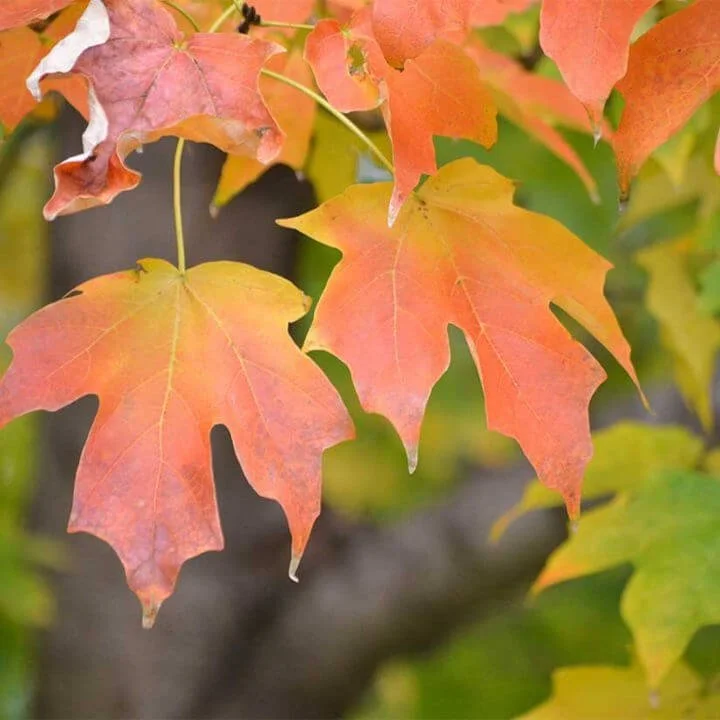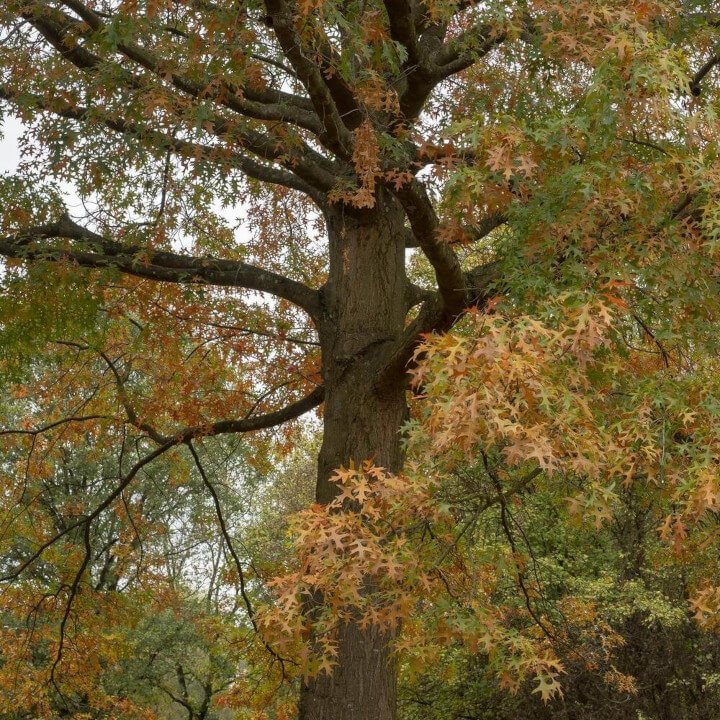An evergreen conifer native to the eastern half of North America, the eastern red cedar is a bushy tree that provides ecological benefits year-round. It’s a cold-hardy tree that is adaptable to a variety of soil types, loves full sun, and can tolerate salt and pollution, making it an outstanding urban tree and a particularly powerful contribution to any type of landscape.
Read MoreThe bald cypress (Taxodium distichum) is a unique canopy tree that offers serious environmental benefits while also having an interesting visual appeal that is its own. This tree is a moisture-loving conifer with feathery leaves that drop off in the winter. Between its form and function, the bald cypress is a robust contribution to a property’s landscape and a neighborhood’s canopy.
Read MorePlanting a tree may require more forethought than you think! There are lots of things to take into consideration when choosing the location for a sapling, including its purpose, maintenance needs, your yard’s soil type, and in particular, the mature size of the tree. Big trees shouldn’t be planted too close since they can become hazards to people and property if they grow to full size in the wrong spot, while small trees can be planted closer to a house with fewer issues.
Read MoreWhile Nashville’s neighborhood canopy offers a colorful backdrop to everyday life in autumn, there are many majestic displays of nature’s beauty just outside of Nashville! Whether it’s an outing with family and friends or time to commune with nature on your own, getting into wild spaces is one of the best ways to truly appreciate and enjoy the vibrant fall foliage, wildlife, and many outdoor activities made available by protected areas. Here, we’ll go over seven destination locations near Nashville where you can take a break from town life and immerse yourself in the shades of the season.
Read MoreCareful curation of a property’s landscape is essential to prevent invasive species from being introduced into local areas by spreading from yards into unmanaged and wild environments. In this article, we’ll go over what invasive plants are, how they spread, what negative effects they can have on ecosystems and human communities, as well as how to get rid of them, prevent their establishment, and manage the spread of those invasives already present.
Read MoreA hybrid of two types of sycamore trees, the London plane was popularized in and originally distributed from its namesake city, being an urban tree through and through. Its robust and hardy nature makes this tree a great choice for Nashville streets and neighborhoods, where a London plane will thrive in the built environment.
Read MoreAs sweater weather settles in, so do the reds, yellows, and oranges of fall leaves in Nashville. The canopy’s color change creates the annual show that reminds us of the year’s progress, giving us a bright visual treat before the more somber season of winter takes hold. In Nashville, where warmer temperatures linger into October, mid-fall is when leaf color change is at its peak.
Read MoreFrom an acorn to a robust, mighty tree, the oak is often used as a symbol of patience and durability. Oaks are well-known for their sturdy trunks, distinctive acorns, and lobed leaves, as well as their longevity. In this article, we’ll profile some of the different kinds of oak trees that can be found around Nashville.
Read MoreAnthracnose is the common name for a group of fungal pathogens that grow on the leaves and branches of trees of all kinds. While the fungus is unsightly, it isn’t deadly in most cases and usually clears up on its own. Here, we’ll go over how to spot anthracnose, how it affects trees, and what you can do to reduce the chances of it taking hold in the early months of spring.
Read MoreScale (also called bark scale) is a common pest found on both indoor and outdoor plants, including trees. While not all are specialized, some scale bugs are associated with specific plants and trees. Any tree can be affected by scale, but over the last several years, there has been a particular problem with a newly invasive scale bug being found on crepe myrtle trees. Here, we’ll go over what scale is, why these bugs are a problem, and how to deal with them if you find a tree infested with them.
Read MoreThe emerald ash borer (EAB) has had a serious effect on Nashville’s ash trees over the last several years since the invasive beetle was first spotted in Davidson County in 2014. This year, in 2023, it has become more apparent how devastating that effect has been. Although some precautions can be taken to manage surviving trees, the emerald ash borer’s damage is real and ongoing.
Read MoreOne of the more common tree diseases you might see on your oak, sycamore, or elm is bacterial leaf scorch. The symptoms of this infection are most noticeable towards the end of summer and beginning of fall throughout the southern and eastern US, and it may be mistaken for a lack of water because it shows up on the leaves of infected trees as crispy, brown edges. This is because the bacteria affects the tree’s ability to process water, which starves the extremities. Here, we’ll go over how bacterial leaf scorch is spread, how to identify it, and what can be done to control an infection.
Read MoreMaple trees are loved for many reasons: their bushy canopies provide lots of shade in the summer, they are sturdy trees, and their iconic leaves offer a show in a range of colors throughout autumn. However, a maple isn’t just a maple! There are many varieties of maple trees out there, each with a distinctive character. Here, we’ll profile some of the most common species of maple that you may find across Nashville.
Read MoreOne of the most beloved and common trees in Tennessee is the tulip poplar—so much so that it is the state tree! This poplar is so popular, in fact, that it’s the State tree for two others: Kentucky and Indiana.
Read MoreThe trees in our yards both beautify the space and make the environment healthier, but they can also produce delicious fruits for us to enjoy! A fruit tree performs many of the same functions that other trees do, like stabilizing the soil, casting shade in its vicinity, and providing habitat for pollinators.
Read MoreThe type of soil in your yard makes a big difference in what kind of plants and trees are able to grow. Soil varies in how well it drains, which nutrients are present and available, and how acidic or alkaline it is. The properties of soil vary greatly depending on their location and the types of greenery that are there, meaning it can even vary from yard to yard. When it comes to the soil in our yards, there are lots of things we can do to encourage good-quality soil that nurtures trees to grow big and strong.
Read MoreTrees are an effective public health resource that not only improve environmental health but the health of individuals and communities as well. By filtering the air and releasing oxygen, trees play a major role in keeping local air breathable, particularly in cities where pollution can be concentrated. In the worst of cases, poor air quality can restrict people from spending time outdoors or result in long-term health conditions like asthma or other diseases. Reducing the amount of pollution that’s released into the air is an important way to manage air quality, but planting and maintaining lots of tree-filled green space is just as important to the health of our communities.
Read MoreWhile the pin oak might seem like an average oak tree, it’s a great option for Nashville’s urban canopy, particularly because it’s native to Tennessee’s mild-to-warm and slightly humid climate. That preference is reflected in its scientific name, Quercus (oak) palustris (swamp or marsh), and its other common name, the swamp oak. This deciduous tree likes moist soils that are slightly acidic, which makes it a robust city tree since it can tolerate some pollution. Its unique leaves, fast growth rate, and native status make the pin oak tree an excellent landscaping choice for almost any Nashville yard.
Read MoreWe love the trees that line our neighborhood streets and stand tall in our yards, but when one of them falls over, it may have to be dealt with differently depending on where it lands. Part of your tree management strategy should include keeping an eye on the condition of trees in your yard, as well as those in your neighbors’ yards that are tall enough to reach your property, in anticipation that the winds of fate may blow in your direction. In this article, we’ll discuss how to minimize and deal with the damage, disruption, and potential conflict that may arise from a fallen tree in a neighborhood setting.
Read MoreKeeping trees in place is as important as planting new ones. Mature trees do much more work than young saplings can, and they are powerhouses of ecosystem services. While planting new trees is an exciting activity, there are many reasons to save healthy, established trees from being cut down. In this article, we’ll go over the nine main benefits of saving trees for our neighborhoods and our health.
Read More






